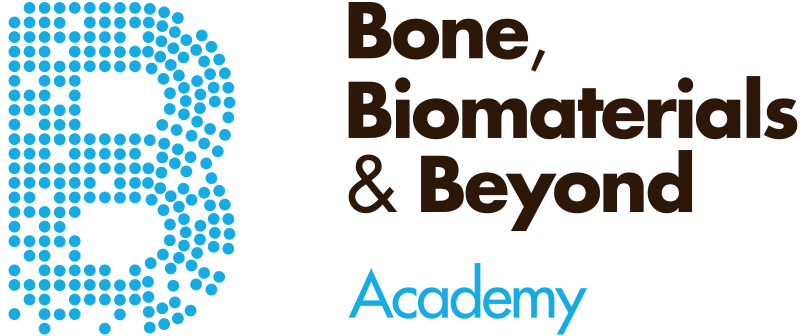Oral Health and Preventive Dentistry, 1/2023
Open Access Online OnlyPeriodontologyDOI: 10.3290/j.ohpd.b4100941, PubMed ID (PMID): 3719533317. May 2023,Pages 171-178, Language: EnglishFrey, Adrian Christian / Gubler, Andrea / Schmidlin, Patrick R. / Wegehaupt, Florian J.Purpose: To assess the root surface roughness and substance loss induced by chemical and chemomechanical challenges on root surfaces pretreated with ultrasonic instrumentation, a hand scaler, or erythritol airflow.
Materials and Methods: One hundred twenty (120) bovine dentin specimens were used in this study. Specimens were divided into eight groups and treated as follows: groups 1 and 2: polished with 2000- and 4000-grit carborundum papers but not instrumented (‘untreated’); groups 3 and 4: hand scaler; groups 5 and 6: ultrasonic instrumentation; groups 7 and 8: erythritol airflow. Samples from groups 1, 3, 5, and 7 then underwent a chemical challenge (5 x 2 min HCl [pH 2.7]), whereas samples from groups 2, 4, 6, and 8 were subjected to a chemomechanical challenge (5 x 2 min HCl [pH 2.7] + 2 min brushing). Surface roughness and substance loss were measured profilometrically.
Results: The least substance loss through chemomechanical challenge was noted after erythritol airflow treatment (4.65 ± 0.93 µm), followed by ultrasonic instrumentation (7.30 ± 1.42 µm) and the hand scaler (8.30 ± 1.38 µm); the last two (hand scaler and ultrasonic tip) did not differ statistically significantly. The highest roughness after chemomechanical challenge was observed on ultrasonically treated specimens (1.25 ± 0.85 µm), followed by hand-scaled specimens (0.24 ± 0.16 µm) and those subject to erythritol airflow (0.18 ± 0.09 µm); there was no statistically signficant difference between the latter two, but they both differed statistically significantly from the ultrasonically treated specimens. No statistically significant difference in substance loss through the chemical challenge was observed between specimens pretreated by the hand scaler (0.75 ± 0.15 µm), ultrasonic tip (0.65 ± 0.15 µm), and erythritol airflow (0.75 ± 0.15 µm). The chemical challenge smoothed the surfaces treated with the hand scaler, ultrasonic tip, and erythritol airflow.
Conclusion: Dentin pretreatment with erythritol powder airflow resulted in a higher resistance to chemomechanical challenge than did dentin treated ultrasonically or with the hand scaler.
Keywords: erythritol airflow, hand scaler, ultrasonic, substance loss, surface roughness
Quintessence International, 9/2022
DOI: 10.3290/j.qi.b2841913, PubMed ID (PMID): 36112020Pages 808-814, Language: EnglishSolderer, Alex / Schmidlin, Patrick R.Objective: Chlorhexidine is the gold standard for chemical biofilm control in dentistry. As with all therapeutic agents, side effects should be considered, which may include allergic reactions. The present review focused on the allergy-causing potential of dental CHX mouthrinses.
Method and materials: Four databases were searched for systematic reviews related to chlorhexidine and dentistry (MEDLINE, Embase, Web of Science, and Scopus). Original papers available in the identified studies and meta-analyses were individually screened for allergy by both authors.
Results: An initial 804 studies were identified, of which 46 systematic reviews and the original papers described therein were ultimately analyzed. Only two reviews explicitly addressed the topic of allergy. In a total of 194 original studies and a total of 9,698 patients, no allergies were reported. In 44 control studies, the topic was touched upon, but only in connection with the inclusion and exclusion criteria and possible contraindications.
Conclusions: The topic of “allergy” regarding chlorhexidine application as a mouth rinse in dentistry seems to be omnipresent. Nevertheless, true allergies to chlorhexidine in dentistry appear to be low to nonexistent. Precautions, however, should still be taken in practice and further studies should be envisaged, especially in patients with an alleged history of chlorhexidine contact allergy. (Quintessence Int 2022;53:808–814; doi: 10.3290/j.qi.b2841913 based on an original publication (in German) in Parodontologie 2022;33(1):59–69)
Keywords: allergy, chlorhexidine, mouthrinse, review
DZZ International, 4/2022
Open Access Online OnlyCase ReportDOI: 10.53180/dzz-int.2022.0014Pages 118, Language: EnglishAttin, Thomas / Schmidlin, Patrick R. / Tauböck, Tobias T.Introduction: The restorative reconstruction of lost tooth structure and the restoration of the original vertical bite position in a dentition that has been severely affected by tooth erosion or abrasion always presents the dentist with problems in implementing the therapy. Traditionally, this therapy is carried out with laboratory-produced restaurations, which usually require preparation of the remaining tooth substance and result in high costs for the patient, so that alternative procedures should be considered. It should be emphasized that any restorative work, even minimally invasive, is only indicated in these patients if the preventive approach of inhibiting further loss of tooth structure is successful at the same time.
Treatment method: The following article presents a case study on the use of direct adhesive composite restorations as a possibility for reconstructing an erosively severely altered dentition. Transfer splints, which are fabricated on the basis of individual wax-up models, are used to reconstruct the occlusal surfaces.
Conclusion: The procedure described is a well-studied and proven method for restoring teeth with erosion-induced tooth wear. As with all new procedures, there will be a certain learning curve for the practicing dentist, after which high-quality restorations can be implemented using this technique.
Keywords: adhesive technique, composite, erosion, occlusal vertical dimension, tooth wear
Parodontologie, 4/2022
Pages 411-422, Language: GermanSchmidlin, Patrick R. / Fischer, Kai R.„Failed augmentation“, „GBR-itis“, „Periaugmentose“ oder was steckt dahinter?Dentale Implantate sind heute ein Standard für die Versorgung teilbezahnter Patienten. Oft muss allerdings – vor allem auch bei vorausgegangenem Attachmentvelust nach Parodontitis oder Trauma – der fehlende Alveolarknochen rekonstruiert werden. Hier hat sich die gesteuerte Knochenregeneration (GBR) als regeneratives Standardverfahren etabliert und bewährt. In der Langzeitprognose stellen entzündliche periimplantäre Erkrankungen und deren Behandlung allerdings eine nicht seltene Komplikation und Herausforderung dar. Gelegentlich trifft man auch auf nichtentzündlich bedingte Knochenabbaumuster, welche bislang nicht klar definiert wurden. Hier kann zum Beispiel einer klinisch nicht erkennbaren symptomlosen primär fehlgeschlagenen Knochenaugmentation eine entscheidende Rolle zukommen. Dieser eher degenerative Knochenabbau oder − provokant formuliert – diese „Periaugmentose“ soll im vorliegenden Artikel anhand wissenschaftlicher Grundlagen der GBR sowie zweier klinischer Fälle aufgezeigt und diskutiert werden.
Manuskripteingang: 19.07.2022, Annahme: 15.08.2022
Keywords: Implantate, gesteuerte Knochenregeneration (GBR), Augmentation, Periimplantitis, Knochenabbau
Deutsche Zahnärztliche Zeitschrift, 4/2022
PraxisDOI: 10.53180/dzz.2022.0018Pages 231, Language: GermanAttin, Thomas / Schmidlin, Patrick R. / Tauböck, Tobias T.Einführung: Der restaurative Aufbau verloren gegangener Zahnhartsubstanz und die Wiederherstellung der ursprünglichen vertikalen Bisslage bei einem durch Zahnerosionen oder -abrasionen stark in Mitleidenschaft gezogenen Gebiss stellt den Zahnarzt immer wieder vor Probleme bei der Umsetzung der Therapie. Traditionellerweise erfolgt diese Therapie mit laborgefertigten Werkstücken, die i.d.R. eine Präparation der verbliebenen Zahnsubstanz erfordern und für den Patienten hohe Kosten verursachen, sodass alternative Verfahren in Betracht gezogen werden sollten. Dabei gilt es hervorzuheben, dass jedwede, auch minimalinvasive restaurative Arbeiten bei diesen Patienten nur dann indiziert sind, wenn der präventive Ansatz, weiteren Zahnhartsubstanzverlust zu verhindern, gleichzeitig erfolgreich ist.
Behandlungsmethode: Der folgende Beitrag stellt die Verwendung direkter adhäsiver Kompositrestaurationen als eine Möglichkeit zur Rekonstruktion einer erosiv stark veränderten Gebisssituationen anhand eines Falls dar. Zur Rekonstruktion der Okklusalflächen werden dabei Übertragungsschienen eingesetzt, die auf der Basis von individuellen Wax-up-Modellen angefertigt werden.
Schlussfolgerung: Das beschriebene Verfahren ist eine gut untersuchte und erprobte Methode zur Versorgung von Zähnen mit erosionsbedingtem Zahnhartsubstanzverlust. Wie bei allen neuen Verfahren wird sich für den praktischen Zahnarzt eine gewisse Lernkurve ergeben, nach der hochwertige Restaurationen mit dieser Technik umgesetzt werden können.
Keywords: Adhäsivtechnik, Erosion, Komposit, Zahnhartsubstanzverlust, okklusale vertikale Dimension
Parodontologie, 1/2022
Pages 59-69, Language: GermanSolderer, Alex / Schmidlin, Patrick R.Ein Umbrella-ReviewChlorhexidin (CHX) ist der Goldstandard der chemischen Biofilmkontrolle in der Zahnmedizin. Wie bei allen Therapeutika sollten Nebenwirkungen berücksichtigt werden, wozu auch allergische Reaktionen gehören. Die vorliegende Übersichtsarbeit fokussierte auf zahnmedizinische CHX-Mundspüllösungen im Hinblick auf ein mögliches Allergiepotenzial. Vier Datenbanken wurden auf systematische Übersichtsarbeiten im Zusammenhang mit CHX in der Zahnmedizin durchsucht (MEDLINE, Embase, Web of Science und Scopus). Die in den inkludierten Arbeiten und Metaanalysen verfügbaren und geeigneten Originalarbeiten wurden bezüglich des Themas „Allergie“ von beiden Autoren durchsucht. Von anfänglich 804 identifizierten Studien konnten letztendlich 46 systematische Übersichtsarbeiten analysiert werden. Lediglich zwei Übersichtsarbeiten bezogen sich dabei explizit auf das Thema „Allergie“. Von 197 untersuchten Originalarbeiten mit insgesamt 9.698 Patienten verwies keine Studie auf eine Allergie. Lediglich 44 der Kontrollstudien schnitten das Thema an, wobei dies überwiegend im Zusammenhang mit den Ein- und Ausschlusskriterien und möglichen Kontraindikationen der Fall war. Das Allergiethema bezüglich des Chlorhexidins steht immer wieder im Raum, dennoch scheint das Allergie- und Allergisierungspotenzial, das im Rahmen von Studien in der Zahnmedizin beschrieben wurde, gering bis inexistent zu sein. Unabhängig davon sollten in der Praxis Vorsichtsmaßnahmen ergriffen und weitere Studien geplant werden – insbesondere bei Patienten mit einer angeblichen CHX-Kontaktallergie in der Vorgeschichte.
Manuskripteingang: 20.10.2021, Annahme: 14.12.2021
Keywords: Chlorhexidin, Allergie, Mundspülung, Review
The International Journal of Oral & Maxillofacial Implants, 6/2019
DOI: 10.11607/jomi.7410, PubMed ID (PMID): 31711072Pages 1299-1305, Language: EnglishSahrmann, Philipp / Luso, Sandra / Mueller, Constanze / Ender, Andreas / Attin, Thomas / Stawarczyk, Bogna / Schmidlin, Patrick R.Purpose: To assess surface characteristics and implant stability after implantoplasty performed by two different instrument sequences regarding material loss, surface roughness, and fracture load resistance. Additionally, operators' subjective experience during instrumentation and the damage to neighboring teeth were evaluated.
Materials and Methods: Titanium implants were placed in the position of both first maxillary molars in models exposing 6 mm of their surface. Implantoplasty was performed in phantom heads: Exposed surfaces were instrumented with diamonds and Arkansas stones or abrasive stones and silicone polishers. Operators reported on abrasion, gloss, effectiveness, and tactility using a visual analog scale (VAS). Residual wall thickness of implants was measured on radiographs, material abrasion using three-dimensional (3D) scans, and surface roughness by contact profilometry. Maximum bending moments were measured.
Results: Residual thickness and weight loss were comparable after both treatments (0.3 ± 0.1 and 0.25 ± 0.07 mm and 0.22 ± 0.01 g, and 0.03 ± 0.01 mm and 0.02 ± 0.01 g, respectively, P > .05). Mean surface roughness was lower (P = .0001) for the group with the silicone polishers (0.4 ± 0.2 μm) compared with the group employing diamonds (0.8 ± 0.1 μm). Maximum bending moments showed neither intergroup differences nor stability loss compared with untreated implants. The stone-and-silicone polisher group showed less abrasion (4.6 ± 2.2) and higher gloss values (8.1 ± 1.4) than the diamond-and-Arkansas group (3.1 ± 1.3 and 4.1 ± 2.1, respectively). Superficial tooth injuries at proximal neighbor teeth were common (73% and 80%).
Conclusion: Implantoplasty did not weaken implant stability. The use of silicone polishers revealed lower surface roughness. Regarding surface smoothness, the instrumentation sequence employing silicon carbide and Arkansas stones followed by silicone polishers seems to be superior to the combination of diamond and Arkansas stones.
Keywords: dental implants, fracture, implantoplasty, peri-implantitis, resective surgery, surface roughness
Deutsche Zahnärztliche Zeitschrift, 3/2017
BuchbesprechungLanguage: GermanSchmidlin, Patrick R.Clemens Walter, Roland Weiger (Hrsg.), Eigenverlag der Klinik für Parodontologie, Endodontologie und Kariologie, UZB-Universtitätszahnkliniken, Basel 2016, ISBN: 978–3–033–05677–0, www. pekbook.ch, 81 Seiten, 75,00 CHFNach dem großen Erfolg der beiden ersten Teile PEKBOOK Kariologie und Endodontologie ist nun auch der dritte und vorläufig letzte Teil der sogenannten PEKBOOK-Reihe mit dem Thema "Parodontologie – ein klinischer Leitfaden für die Zahnerhaltung" der Editoren Clemens Walter und Roland Weiger erschienen.
Oral Health and Preventive Dentistry, 2/2017
DOI: 10.3290/j.ohpd.a37931, PubMed ID (PMID): 28322363Pages 147-152, Language: EnglishGolland, Luca / Schmidlin, Patrick R. / Schätzle, MarcPurpose: To test the remineralisation potential of a single application of self-assembling peptides or acidic fluoride solution using quantitative light-induced fluorescence (QLF) in vitro.
Materials and Methods: Bovine enamel disks were prepared, and white spot lesions were created on one half of the disk with an acidic buffer solution. After demineralisation, disks were allocated into three groups of 11 specimens each. Group A served as a control group and received no treatment. Group B had a single application of fluoride, and group C was treated once with self-assembling peptides. All disks were embedded in a plastic mold (diameter 15 mm, height 9 mm) with an a-silicone, and remineralisation was initiated using a pH-cycling protocol for five days. Four experimental regions on each disk were measured prior to the start of the study (T0), after demineralisation (T1) and after the remineralisation process (T2) using QLF.
Results: After demineralisation, all areas showed a distinct loss of fluorescence, with no statistically significant difference between the groups (ΔF from -69.3 to -10.2). After remineralisation, samples of group B (treated with fluoride) showed a statistically significant fluorescence increase (ΔF from T1 to T2 15.2 ± 7.3) indicating remineralisation, whereas the samples of control group A and group C (treated with self-assembling peptides) showed no significant changes in ΔF of 1.1 ± 1.9 and 2.5 ± 1.9, respectively.
Conclusions: Application of self-assembling peptides on demineralised bovine enamel did not lead to increased fluorescence using QLF, indicating either lack of remineralisation or irregular crystals. Increased fluorescence using QLF indicated mineral gain following a single application of a highly concentrated fluoride.
Keywords: peptides, quantitative light-induced fluorescence, self-assembly, white spot lesions
Oral Health and Preventive Dentistry, 1/2017
DOI: 10.3290/j.ohpd.a37711, PubMed ID (PMID): 28232972Pages 33-39, Language: EnglishSchätzle, Marc / Golland, Luca / Patcas, Raphael / Ronay, Valerie / Sener, Beatrice / Attin, Thomas / Peltomäki, Timo / Schmidlin, Patrick R.Purpose: To test the cleaning efficacy of different manual toothbrushes in orthodontic patients in a single-blind randomised clinical trial. The brushes tested were selected based on previous in vitro tests.
Materials and Methods: Thirty-five regular orthodontic patients with a minimum of six bonded brackets on the maxillary anterior teeth were randomly assigned to three experimental groups: staged (2-level) (Candida Parodin, 12 patients) and V-shaped (Oral-B Ortho, 12 patients) toothbrush head designs were compared in a two-phase study to planar control brushes (Paro M 43, 11 patients). First, all participants were advised to brush their teeth twice daily for 2 min for 3 weeks. Prior to the start and at the end of the study, the gingival index was assessed to evaluate the level of oral hygiene. Afterwards, cleaning efficacy was assessed planimetrically by disclosing the respective teeth after two days of not performing any oral hygiene measures.
Results: Of the initial 35 participants, two did not attend after 3 weeks and had to be excluded. After 3 weeks, the control (5 out of 180 sites or -2.8% with GI ? 2) and staged groups (16 out of 216 sites or 7.5% with GI ? 2) showed minor improvement in the oral hygiene level. In contrast, the V-shaped group (29 out of 198 sites or 14.6 % with GI ? 2) showed a statistically significant improvement of the oral hygiene level. Planimetric evaluation, however, showed no superior cleaning efficacy of any of the tested head designs.
Conclusions: The use of V-shaped and staged toothbrush head designs might be beneficial in patients with inadequate oral hygiene undergoing orthodontic treatment with a fixed appliance. Further large-scale investigations are, however, necessary to validate the presented results.
Keywords: bracket, efficacy, orthodontic, RCT, toothbrush





